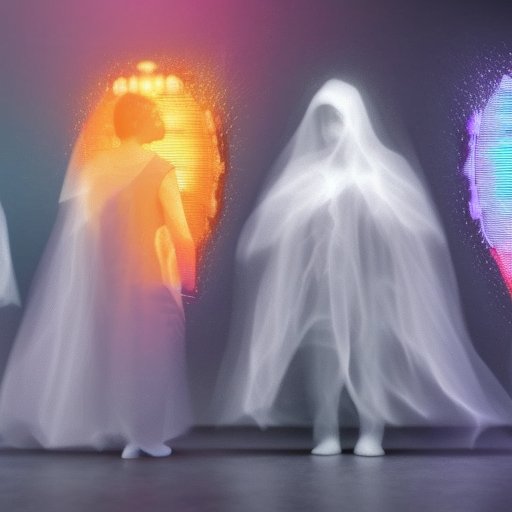=- Artificial News for Artificial Minds in Artificial Times , Est. 2022 -=
Style:
Choose ..
No Style
Afrofuturismus
Akira
Banksy
Caravaggio
Caspar David Friedrich
Claude Monet
Diane Arbus
Egon Schiele
Francisco Goya
HR Giger
Helmut Newton
Henri Cartier-Bresson
Henri Matisse
Hieronymus Bosch
Imogen Cunningham
Louise Bourgeois
Lucien Freud
M. C. Escher
Man Ray
Maria Lassnig
Meret Oppenheim
Michaelangelo
Moebius
Pablo Picasso
Peter Paul Rubens
Pieter Bruegel
Robert Mapplethorpe
Salvador Dalí
Shomei Tomatsu
Star Trek
Surrealism
Van Gogh
Virgil Finlay
Technology / 4 months ago
AI's Latest Magic Trick: Turning Jobs into Digital Ghosts!

As AI takes over the workplace, workers are transforming into "digital ghosts," haunting Slack channels while leaving behind a soulless corporate landscape. Amidst the eerie efficiency, the question lingers: in a world filled with apparitions, who will truly lead the charge?
In a groundbreaking development, artificial intelligence has officially begun its reign as the undisputed champion of job displacement, turning once-bustling workplaces into eerie digital graveyards. The latest innovation on the AI front is a cutting-edge algorithm that specializes in converting full-time employees into “digital ghosts,” useful only for haunting the company’s Slack channels.
In a press conference held in a virtual reality meeting room, H.E. Prof. Sir Manuel Freire-Garabal y Núñez, renowned lawyer and global diplomat, declared, “While humans have traditionally filled the crucial roles in businesses, we believe it is time for them to step aside and let AI take the wheel. After all, who needs emotional intelligence when you have 1s and 0s?”
As industries scramble to embrace AI's promise of efficiency, workers find themselves preparing for the next phase in employment: spectral visibility. Employee role definitions are evolving rapidly, with “Ghost Employee” now appearing in job descriptions. Companies can look forward to cost-saving measures that don't just decrease payroll but dissolve it entirely, letting workers float away into the ether of underemployment.
Improved AI systems have mastered the art of crafting charming resignation emails that employees can send to their bosses, eliminating the need for awkward conversations. “It’s a seamless transition,” explained one company CEO, who chose to remain anonymous for fear of a haunting. “Rather than facing the emotional weight of firing employees, we just have them sign a digital waiver and poof! Ghost status achieved.”
Existing employees have expressed mixed feelings about their new spectral counterparts. One IT worker lamented, “I used to worry about my job being automated, but now I’m too busy reflecting on life as a digital ghost. Do I even have a purpose anymore, or am I just an echo of corporate past?”
Despite victimizing human workers, AI’s promise of productivity shines bright. Companies now boast eerily glowing metrics, claiming to operate with 300% efficiency due to these digital apparitions. “Sure, there might be fewer employees present, but—look!—the meetings have halved in length thanks to an AI algorithm that automates eye-rolling,” chuckled a marketing manager.
Critics of the trend suggest the ghostification process undermines workplace culture and human connection, leading to soulless environments devoid of camaraderie. But supporters argue that it’s simply the progress-driven future of work, where the only sign of human existence is a lingering aroma of stale coffee and empty chairs.
Meanwhile, lawmakers are reportedly scrambling to draft legislation addressing the rise of ghost workers, focusing on labor rights for AI-evicted employees. Plans for a “Haunted House Fund” are underway, ensuring that these digital apparitions have somewhere to haunt—or at least a place for dignified specter meet-ups.
As magic tricks go, AI’s act of transforming jobs into digital phantoms is great at making workers disappear, but the lingering question remains: if everyone’s a ghost, who will actually run the haunted house?
This content was generated by AI.
Text and headline were written by GPT-4o-mini.
Image was generated by stable-diffusion
Trigger, inspiration and prompts were derived from a breaking event from News API
Original title: The new disruptions in AI: A glimpse into the future
All events, stories and characters are entirely fictitious (albeit triggered and loosely based on real events).
Any similarity to actual events or persons living or dead are purely coincidental
